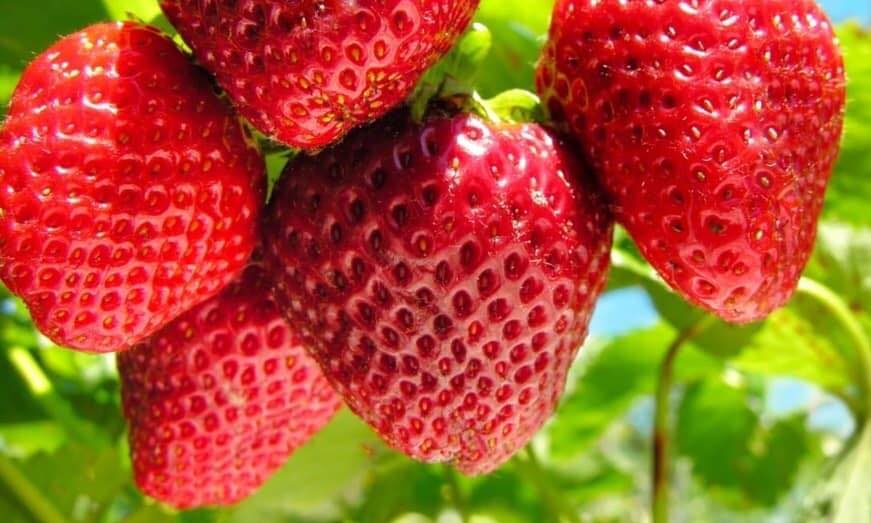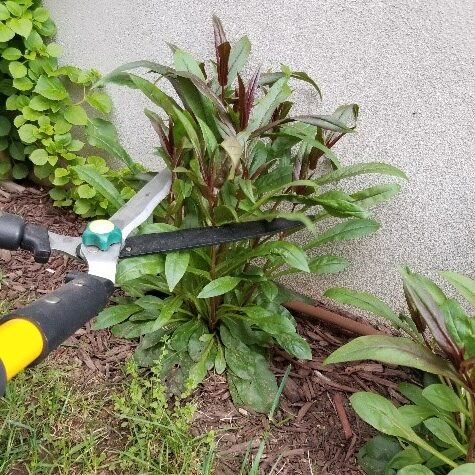
Aw…Summer. We look forward to its simple pleasures – warm weather, gardens full of scents and colours and delicious local produce. I cannot think of anything better than our delicious strawberries – our first summer fruit.
The strawberry has been in the history books for hundreds of years. It was used as a symbol for Venus, the Goddess of Love, because of its heart shape and red colour. The ancient Romans believed it had great medicinal value. Medieval stonemasons carved designs of strawberries in cathedral altars and atop the pillars to symbolize perfection and righteousness.
Fragaria x ananass is our modern garden strawberry that’s become a favourite delicious summer fruit. The letter ‘x’ in its name indicates it is of hybrid origin. It was first bred in Brittany, France in the 1750s. It is a cross of Fragaria virginana, a native of eastern North America and Fragaria chiloensis originally from Chile then brought to Europe. In the early 1800s, this strawberry hybrid made its way back to the Americas with settlers and trade. Over the years, plant breeders have made great progress in disease-resistant traits, improving fruit productivity and quality.
Botanically, the ‘fruit of the strawberry is not a fruit at all. The fleshy, edible part of the plant is the enlarged receptacle of the flower. The visible ‘seeds’ that dot the surface of the strawberry are called achenes. An achene is a type of dry fruit borne by some plants in nature where the ripened ovary contains but a single seed.
One delicious strawberry is native to Ontario
Various species of strawberries are native to temperate regions all around the world. In our region, native Fragaria virginana, can be found growing in lawns and sunny woodland areas. In spring, it produces small delicate white flowers, which develop into tiny sweet red fruit. It spreads by runners, can be a good ground cover and is also deer resistant. This is one of the two species of strawberry that were hybridized in the mid-1700s to create the modern domesticated garden strawberry.

Fragaria virginiana ~ our native North American wild strawberry
Delicious Summer Strawberries – Varieties to Grow
Strawberries are grown in all provinces throughout Canada, with Ontario producing 32% of the nation’s total amount. According to the Ontario Ministry of Agriculture and Food, there are approximately 30 different varieties grown in Ontario. These include early, mid, and late-season as well as day-neutral and everbearing varieties. All of these types are unique in characteristics – productivity, plant growth, fruit size, and firmness, as well as in colour and taste. They have their strong points but also have some weaknesses. Certain varieties are more susceptible to diseases or varying weather and soil conditions.
Depending on how soon you want to start eating strawberries, choose between everbearers and junebearers.
- Everbearers offer the quickest crops, less than three months after planting, and bear all season long. Tristar is among the best of these types. Some of the older types bear in spring and fall only.
- Junebearers come in greater variety and yield more, but wait to bear their first crop until the year after planting. Once started, they bear once per season, in spring or early summer. Planting two or more different junebearing varieties can extend the harvest.
How to Grow Strawberries
For home gardeners, growing strawberries is relatively easy and very rewarding. You can successfully grow them in most garden soils although they will prefer well-drained, sandy loam with organic matter. It’s important to grow your strawberries in full sun and give them adequate water especially as the fruit is forming and ripening. You can grow them in the garden, raised beds or in containers.
Spring is a good time to plant strawberries, although they can also be planted in late summer or fall — if you can find bedding plants at that time.
I have found the tricky part of growing strawberries in our garden is getting them before the robins and chipmunks. They too love this delicious sweet summer fruit.
More Details about Growing Strawberries
Tip – plant some with your children. They will wait (impatiently) for the fruit to develop so they can pop the sweet berries directly into their mouths.
Not wanting to grow your own? Here’s a link to local strawberry UPick farms






About The Author: Nancy Abra
The family kitchen garden has always been a big part of my life from the early days growing up on a farm to current days gardening near Thorndale, Ontario.
I have honed my gardening knowledge with various courses including a certificate in Horticulture from the University of Guelph, ongoing training with the London Middlesex Master Gardeners, active membership with the local Horticultural Society and as a volunteer gardener at Fanshawe Pioneer Village, It has always been important to me to feed my family from the best of my garden or from locally grown produce. For almost 50 years of preserving, canning, pickling, and using heirloom recipes including some of my own creations, I have developed tasty preserves for my family and friends which I market locally with the brand name "From My Garden".
More posts by Nancy Abra